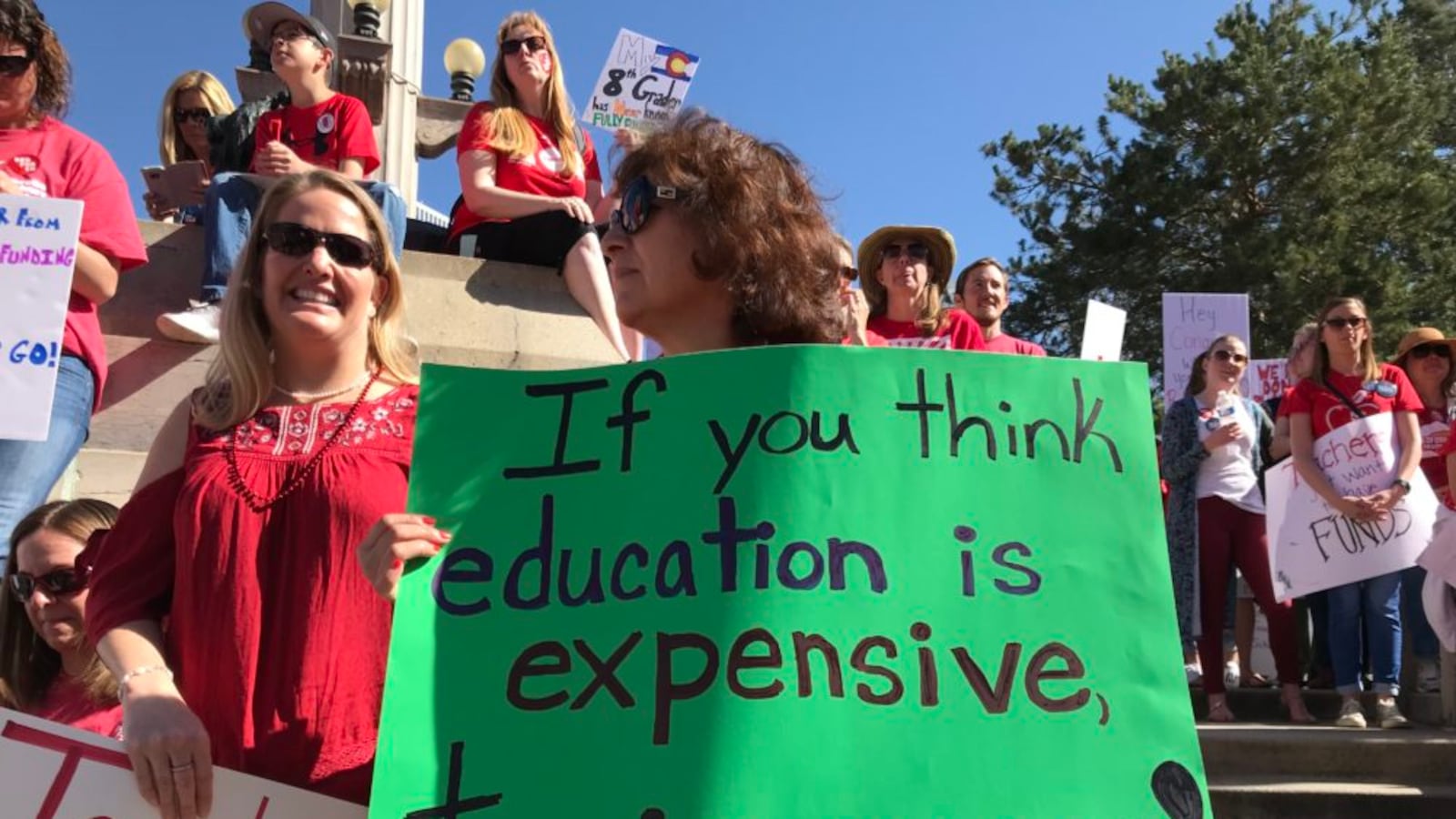It was the statistic heard ‘round the education world: School districts where students are predominantly white get $23 billion more in state and local funding than districts predominantly serving students of color.
Presidential hopeful Joe Biden cites the number in his education policy plan. Senator Bernie Sanders has referred to it on the campaign trail. At a recent education-focused forum, Beto O’Rourke promised to close that spending gap if elected president.
So in some ways it’s a surprising moment for this news: The organization that calculated and promoted the statistic, EdBuild, is starting the process of closing its doors.
EdBuild founder Rebecca Sibilia says the nonprofit will cease operation by the end of 2020 as it releases its final reports. Those will cap a six-year run of influential analyses documenting disparities in school funding, how school district borders segregate students, and the relationship between the two.
“The question is, where do you go?” Sibilia said. “We can continue to seek philanthropic dollars to issue the same reports over and over and over again. But that’s not the best use of money in this space. We kind of said everything that we need to say in terms of defining the problem.”
EdBuild’s work has been two-pronged. The first has been its reports, including visually striking ones examining wealthy school districts that have seceded from less affluent ones and the school district borders that do the most to segregate students. Those have fed into a growing national discussion about integrating schools and about the importance of school funding — boosted by recent research that has found that funding is directly connected to students’ academic outcomes.
“EdBuild has been an excellent ally and leading voice in driving the conversation toward equity in school funding,” said Ary Amerikaner, who works on school funding policy for the civil rights and education group Education Trust. “Their recent $23 billion report really broke through.”
The second piece of EdBuild’s mission — working with a handful of states to redesign their funding formulas — has proven less successful, Sibilia said, and more difficult to consistently fund. That work has also clashed with the first piece.
“It’s very difficult to call states out on crazy things that they’re doing to their kids and to their school districts and also work in that state to try to make things better, because you’ve already come in with this perspective that’s going to make some folks mad,” she said. “It becomes almost impossible to be an advocate and a technocrat at the same time.”
EdBuild saw its funding proposals narrowly defeated in Mississippi and wither in Georgia, Sibilia said. It’s continuing to do work in Tennessee and Colorado, and has a proposal still on the table in Oklahoma. EdBuild has recommended that states adopt what it describes as a “student-centered” funding formula, in which schools get money for each student it serves, with extra funds going to low-income students and those with disabilities, for instance.
Another challenge, Sibilia said, was doing state-level work as a national organization.
“It takes a very long time for the conditions on the ground, both political and economic, to align in a way where this work can be done,” she said. “It has to be driven by local and state advocates.”
Amerikaner, speaking generally, echoed that point.
“One of the things that we have found is that it’s very, very hard to shift the policy landscape in states unless you do a lot of work to build relationships and get buy in from the ground up, especially if you’re not local,” she said. “That requires a huge amount of relationship building, and investment and long-term commitment from funders.”
EdBuild has had an annual budget of about $2 million, Sibilia said. It has been funded by major education philanthropies, including some, like the Arnold Foundation, the Bill and Melinda Gates Foundation, and the Walton Family Foundation, that have not generally prioritized school funding and segregation work. (Arnold, Gates, and Walton are funders of Chalkbeat.)
Through next year, EdBuild plans to issue a handful of additional reports — including one that will be published at the end of this month focusing on neighboring school districts with the starkest resource disparities.
This story has been corrected to accurately reflect a quote from Education Trust’s Ary Amerikaner.


